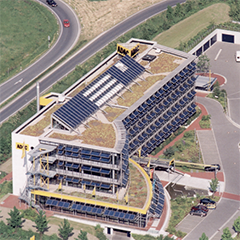Dirk Tegtmeyer, CEO Ingenieurbüro Mencke & Tegtmeyer GmbH, gives PES a short look into the near future and explains why quality is paramount as PV conquers the world and nobody can stop it. Even in Germany, where politicians tried to shut down PV installations and industry, the news gets better every year.
The last tender for renewables saw a 32 to 0 for PV to wind energy. This is good for PV, but we should have wind in mind as well. The actual news says that Intersolar Germany is already booked out. And Fraunhofer ISE announces that PV energy is already cheaper than fossil energy in some installations in Germany. While Photovoltaic components become cheaper and cheaper, one has to think about the energy output.
What will be main stream and what will become another part of PV industries? For residential houses it will be cheaper to install a small battery system for use of PV energy instead of buying from the utility companies. Using optimised control systems the energy drawn from the grid can be minimised to less than 20 % of the overall consumption. Together with new concepts of electric vehicles, with bidirectional charging, this step can get to more autonomy and the energy yield can be seen directly through the control systems.
For large-scale installations of grid-connected systems the energy output is much more important to be within the limit of planned yields. Every loss in energy output costs not only money, but stability for the grid. Therefore it is very important to know the actual yield and performance of the system throughout the whole of the day. Real time monitoring gives supply security and helps the operator to run the system within the planned range.
Many activities and solutions are well known and used for detecting defects and specific problems like micro cracks in PV modules due to problems during production, transport or installation. Portable flash-light systems, electroluminescence measurements, drones with infrared cameras or photoluminescence measurements are commonly used to detect failures within the modules and strings.
Experts for maintenance and service nowadays are able to find the most important failures in the electric installation and inverters within a short time. But all these points are minor. The priority has to be to set quality in production, transport, installation and monitoring, so that failures can be minimised during the complete lifetime of a PV system.




























